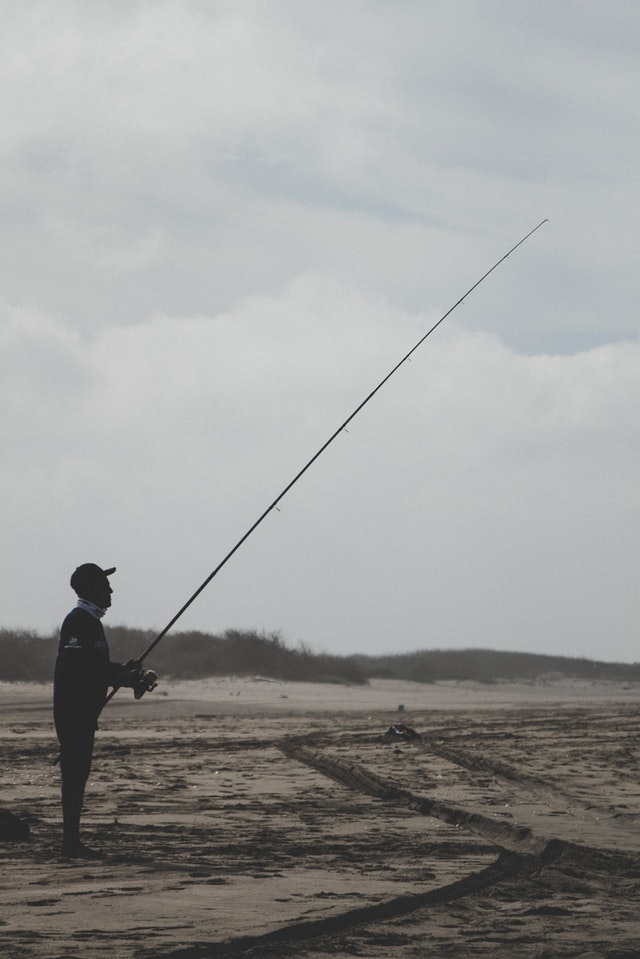Spooling Braid
How to Spool Braid Line
Spooling
braid properly
When
using braid it is critical to spool spinning reels properly to avoid wind
knots. Most manufacturers of spinning reels made for use with braid are
aware of the importance of line lay and have designed the rotor and line roller
to fill the spool evenly from top to bottom with braid of a specified diameter.
If you use the correct diameter line and spool the line correctly then there is
little likelihood of developing wind knots during casting.
However,
most spinning reels are designed for use with braid and nylon. This inevitably
means compromise as nylon is thicker than braid and sometimes the line lay on
the spool is not optimal for either nylon or braid when the reel is spooled
straight out of the box. To get around this problem most new reels come with a
package of spool washers to allow the angler to fine tune the line lay.
This
was clearly reinforced to me recently during testing of a prototype spinning
reel. I took great care to ensure that the braid was tightly wound onto the
reel during spooling but even though the line level on the spool
was several millimeters from the lip and line lay looked even there
was a small gap adjacent to the spool lip. Sensing this small gap could cause
an issue i removed the line and tried several times to make the line sit snugly
against the spool lip. No matter what i tried the line roller was not
quite delivering the braid tightly against the base of the spool lip. The reel
was obviously designed for nylon and not braid and the thinner diameter braid
could not be delivered evenly across the width of the spool by the line
roller. This is shown below.
Solving
this problem is relatively straightforward by adding a thin spool washer to the
shaft.
 The
size of the spool washer needed to fill out the spool properly will have to be
determined by trial and error but it is best to start by adding thin arbor
shims rather than large washers. As mentioned earlier, most reputable spinning
reels will come with a set of spool washers to allow the angler to customize
the line lay and when fine tuning it is best to start with the thinnest washer.
The
size of the spool washer needed to fill out the spool properly will have to be
determined by trial and error but it is best to start by adding thin arbor
shims rather than large washers. As mentioned earlier, most reputable spinning
reels will come with a set of spool washers to allow the angler to customize
the line lay and when fine tuning it is best to start with the thinnest washer.
It
is important to note that not all uneven line lay is a shortcoming. Some reels
are designed to have line lay slightly tapered either towards the top or
bottom. Check the reel manual before making any adjustments. However, if there
is a noticeable gap at the top or bottom of the spool then it will
probably be necessary to add or remove a washer or shim as if you don’t line
will slip into the gap and go slack. It is this slack line which causes
issues when casting.
There
are 3 types of unbalanced line lay:
Top
of the spool holds more line than the bottom with a groove. The spool is
sitting too low on the main shaft. To counter add a washer.
 Bottom
of the spool holds more line than the top with a groove. The spool is sitting
too high on the main shaft. To counter remove a washer.
Bottom
of the spool holds more line than the top with a groove. The spool is sitting
too high on the main shaft. To counter remove a washer.
Finally,
unbalanced line lay along the entire spool. This occurs when drag
washers are worn out. Replace the washer set.
The
following videos show how to spool a spinning reel correctly with braid and how
to adjust the spool washers to alter the line lay.
Spooling
with braid:
Modifying
line lay by changing spool washers
It
may take a couple of tries to get the line lay perfect but when you do the
chances of creating wind knots during casting is greatly reduced. There are a
few other things that have to be considered in spooling and using braid to counter
the formation of wind knots.
Once
the line lay and level of braid on the spool are optimized, using braid
should be simple and stress free.









No comments
Help Us to improve our web by comments and suggestions.